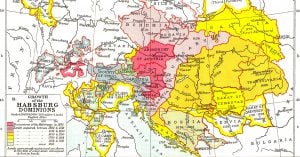Legacy Tree works with researchers all over the world to access records for our clients. We asked one of our onsite researchers, located in Iaşi, Romania, to share his experiences with genealogy research in Romania at the National Archives in Iaşi, and the records available to help with your family history. The city of Iaşi and its archives – an overview The city of Iaşi is the largest locality in the northeast of Romania, a region called Moldavia. Not to be mistaken with the Republic of … [Read more...]
The DNA Guide for Adoptees: Book Review and Giveaway!
I recently had the opportunity to read The DNA Guide for Adoptees, by Brianne Kirkpatrick and Shannon Combs-Bennett. Shannon is a DNA Consultant at Legacy Tree Genealogists, and both authors are very well-versed in genetic genealogy and have much experience in helping adoptees identify their biological families. While the book is called The DNA Guide for Adoptees, it is actually a comprehensive guide to all avenues an adoptee can take or should consider in researching their biological … [Read more...]
The Lure of the Land: 4 Types of Land Records That Can Help Solve Genealogy Brick Walls
Land records are some of the most underutilized, yet most useful, records available in genealogy. Often, they are the only records which state a direct relationship between family members. They can also be used to prove relationships indirectly by studying the land laws in force at the time. Sometimes they can even be used to locate an ancestor’s farm or original house, so that we can walk today where our family walked long ago. Land records exist in the United States in abundance for most … [Read more...]
Why Is It Not on The Map? How Learning History Aids Your Genealogy
"Why is it not on the map?" We discuss how learning history can help you in your family history research--especially when it involves areas with shifting boundaries and name changes! One of the biggest frustrations for a family historian is finding a new place name written in a family record … but then not being able to find that place on a modern-day map, as was the issue we recently discussed in our blog article, Finding Vital Records for Galicia, Austria-Hungary. Sometimes this quandary … [Read more...]
Mapire: A Free Tool for Historical Maps of Europe
Historical maps of Europe are an often underutilized resource in European genealogy research. We share a free tool that allows you to add European maps to your genealogy toolbox! Since most records were held on the town/parish level in Europe, locating the correct town is an essential first step before researching your ancestors in their country of birth. Over the centuries, borders in Europe sometimes changed drastically, so it is important to know to which country or empire your ancestral … [Read more...]
Finding Vital Records for Galicia, Austria-Hungary
Historical name and border changes can affect what records were created and where they are held today. In this article, we look at how to find vital records in Galicia, Austria-Hungary. Before historical records can be searched for any location, it is necessary to understand the historical names and border changes associated with that place, since this can impact what kinds of records were created and where they are held today. If you have ancestors that reported they were from Galicia, … [Read more...]
Putting the “Story” Back in Family History
Whether you want to build your family history with as many names and dates as possible, or choose to instead focus on discovering the stories and details of your ancestors' lives, there's no right or wrong goal. It's about choosing what's important to you. Choosing How to Build Your Family History As project managers, one of the questions we ask our clients is whether they want us to build their family trees as quickly as we can, only including biographical material if it is of unusual … [Read more...]
Seeking Connection: The Importance of Family History
We explore the importance of family history in helping you find belonging, and how records can help you discover the meaningful details of your ancestors' lives. Family can mean different things to different people. For some, it means to be with people who understand and accept you unconditionally. For others, it is strictly those to whom they have a biological connection. Some of us don’t have ideal families, while others couldn’t imagine their life without family. Most often, though, it’s a … [Read more...]








